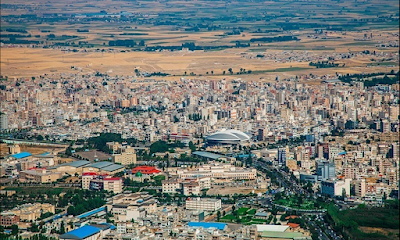"Who has not felt the urge to throw a loaf of bread and a pound of tea in an old sack and jump over the back fence?" - John Muir
If you put yourself back in late March 2020 you'll remember we were in a Twilight Zone world. Everything was shut down and there was no certain answer as to when it was to come back. Kendra and I had just moved to Milwaukee that month. She started a new job as CEO of the Marcus Performing Arts Center literally days before everything shut down. I started a new job as Physician Assistant in the Transplant ICU at Froedtert Hospital.
Certainly a hospital has been a stressful time to work throughout the pandemic. However, I've felt lucky that I still had a place to work and the face-to-face socialization that so many people were missing at the beginning. For Kendra obviously everything changed. There were no concerts. She was the head of an organization that had a mission in conflict with basic public health.
Escapism gets a bad rap. I don't mean the kind of escapism that keeps you from meeting your responsibilities in life. I mean escapism that momentarily takes you outside of your life and situation to help you remember the world is a big place. The world doesn't revolve around you and your problems. And by exploring this big world you might get your perspective shifted just enough to come at your own problems from a different angle.
I had actually dreamed up this trip idea a year or two prior, but this seemed like a good time to do something with it. Some people took up baking bread, I decided to write a blog about a virtual trip around the world.
So how did I decide where I wanted to go? I started with UNESCO World Heritage Sites - over 1,000 historical, cultural and natural places. I picked out sites that interested me then I would map out how to get from each place to the next and find other places I wanted to visit along the way. I started where I lived - in Milwaukee. It being early spring, the pull to venture south was strong. So, I just found a destination that was about a days drive south and started there.
It turns out that my first place was had a certain thematic meaning to it as well as being in the right location. It was Cohokia Mounds State Park, in Illinois just east of St. Louis. It was the site of the largest pre-Columbian city north of Mexico. There were 10,000-20,000 people living there in 1,000 CE - putting it on par with the population of London or Paris at that time. The places that I enjoyed learning about most were places that had been centers of population and culture at a certain time, but eventually were either completely abandoned or transformed. As Percy Shelly put it - "'My name is Ozymandias, king of kings: Look on my works, ye mighty and despair.' Nothing beside remains. Round the decay of that colossal wreck, boundless and bare the lone and level sands stretch far away." Or as my mother-in-law says, "nothing lasts forever, neither the good or the bad."
To me the idea of impermanence is incredibly important. Humans are at our most dangerous when we attempt to delay or deny the natural impermanence of the world. As Americans we are ridiculously centered on our own culture and politics as the greatest that has ever existed. Many Americans believe that all of history has been a build up that has culminated in the perfection of the culture and political virtues of the United States. The reality is that we are one of many centers of culture that have existed and eventually we will pass the baton (or it will be taken from us) to someone else. It's not a coincidence that the first place I visited was Cohokia and the last place was Babylon.
But I didn't just visit places that are only meaningful to historians. I enjoy modern cities and capitols as well. The variety of locations that humans have built big modern cities is vast - there isn't a landscape that doesn't include a city with millions of people. I found that I have a certain affinity for port cities - these cities are usually our most diverse, vibrant and tolerant; New Orleans, New York, Amsterdam, Hong Kong etc.
I also enjoy beautiful natural landscapes. Only in a natural place can you really come to terms with how much of the world doesn't operate on human timelines or scale. We are one of billions in terms of the human population, but humans are a small part of the planet (although we have the power to destroy it). I guess if I really wanted to show how small I am I could have taken the trip interstellar - but I needed to have some boundaries.
At the beginning of this project I didn't know if it would hold my interest this long. I have written one post for each day since March 31, 2020 - 862 days. Early on I realized that I may have well written it on my hard drive - basically the same number of people would have read it. But that's ok - not everything we do that's meaningful to us has to be meaningful to others. On the other hand, now that it's complete maybe it will be of more interest. I don't know - that's up to you all.
Happy travels,
Ben















































